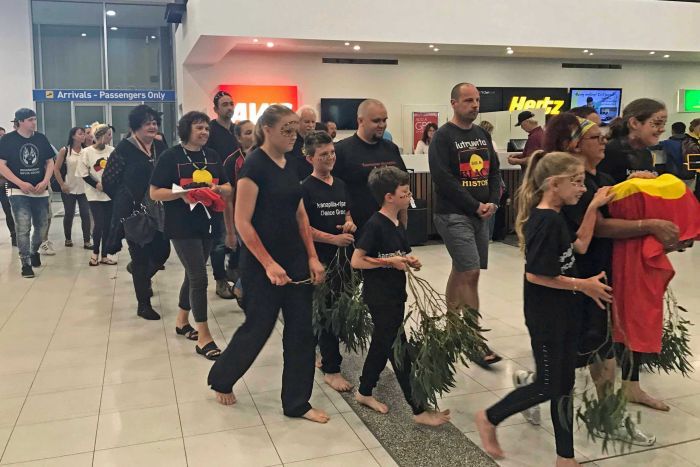Aboriginal remains return to Tasmania from ANU collection, with a call to change the law
Updated
Tasmania's Aboriginal Relics Act is itself "a relic" and should be changed to ensure Indigenous remains can never again be removed for research, Aboriginal rights activist and retired lawyer Michael Mansell says.
The call came as bones of three unidentified Tasmanian Indigenous people were returned to the state more than half a century after being taken to Canberra to be studied.
"The out-of-date Tasmanian Aboriginal Relics Act, which is a relic in itself made in 1976, that needs to be updated," Mr Mansell said.
"The same thing could happen in Tasmania again.
"If an archaeologist got permission from Parks and Wildlife to take human remains or other cultural materials away, he does not have to talk to a single Aboriginal person, and so Aboriginal people are no better off now than they were in 1976."
 Photo:
Michael Mansell says Indigenous remains could still leave the state under the current law. (ABC News)
Photo:
Michael Mansell says Indigenous remains could still leave the state under the current law. (ABC News)
Mr Mansell also called on the State Government to keep four-wheel drives out of some of the state's west coast tracks.
The tracks have been part of a dispute that has gone to the Federal Court, with the Aboriginal community arguing that their cultural heritage will be destroyed if four-wheel drives are allowed back into areas that contain middens.
The State Government is making moves to change the Aboriginal Relics Act, but has yet to comment on the removal of remains.
'They should never have been removed'
Tasmanian Aboriginal men Jarrod Edwards and Thomas Riley brought home their ancestors' remains on Tuesday in a box draped with the Aboriginal flag, and were welcomed by a cleansing ceremony.
They were greeted at the Launceston Airport by members of the community, who were carrying gum leaves and dancing, and welcomed home to country.
Mr Edwards, from the Tasmanian Aboriginal Centre (TAC), said returning the remains was hugely important.
"Our old people are an integral part of our story and in connection to our country, and they deserve the right to be laid to rest here and they should never have been removed," he said.
"The process was rather seamless. The Australian National University in Canberra was very cooperative with us and facilitated everything we needed."
Mr Edwards said the TAC had been campaigning for the return of ancestral remains from institutions around the world for 40 years.
"Every time we bring our ancestors home is a very significant thing for us," he said.
"Institutions around the world have got collections of our old people, that they continue to keep in the name of science, and to us they're people, they're our ancestors and they deserve to be laid to rest in their homeland."
 Photo:
Aboriginal ancestral remains are brought back through Launceston Airport. (ABC News: Carla Howarth)
Photo:
Aboriginal ancestral remains are brought back through Launceston Airport. (ABC News: Carla Howarth)
Mr Riley said the remains of their three ancestors, which were taken to the Australian National University in the mid 20th century from their traditional burial site, could be tens of thousands of years old.
He said bringing the ancestors back to Tasmania was significant.
"It's the highest privilege I've ever had in my life," he said.
In a rare event, the Indigenous community knows exactly where to rebury the remains, but the location will remain secret for cultural reasons.
The return of Aboriginal human remains and cultural property collected by colonists and explorers for study, or simply as exotica, has been a long-fought battle over decades.
Tasmanian Aboriginal remains were the subject of a bitter court battle in 2007 after the British Museum agreed to release the items for return to Australia, but then sought to hold on to some material for further scientific testing.
Furious over the delay, TAC took the case to court backed by the Australian Government, with the museum ultimately agreeing to surrender the materials.
Topics: aboriginal, indigenous-aboriginal-and-torres-strait-islander, community-and-society, tas
First posted










